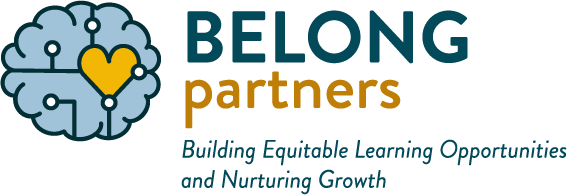All young people deserve and require acceptance and support from their communities to learn and thrive. Prioritizing building inclusive classrooms for all students, regardless of their identity, can quite literally save lives.
According to Child Trends, a recent study published in the Journal of Adolescent Health demonstrates the power of affirming transgender youth’s identities: For each additional context (i.e., at home, school, work, or with friends) in which a transgender youth’s chosen name is used, their risk of suicidal behavior is reduced by more than half. Given that 41% of transgender and non-binary students report they had attempted suicide at one point in their lives, it is vital we support trans and non-binary students and colleagues in our classrooms and communities. Here are a few ways to start:
Stop Misgendering Students
Trans and non-binary students experience higher levels of depression, anxiety, and suicide attempts – largely due to being misgendered, feelings of rejection by friends and family, and experiencing discrimination.
At its core, the sense that you are not being perceived as the person you identify as, nor called the name you identify with, is extremely painful. Calling students by their chosen names and pronouns is the least we can do to support them – and emphatically can prevent self-harm, suicide, depression, and anxiety. If you are struggling with misgendering students and colleagues, here are some simple tips to stop misgendering folks.
Educate Yourself and Your Communities
We have all received negative messaging and misinformation through socialization that dehumanizes trans folks, and the first step is unlearning biases through self-education.
Not sure where to start? GLSEN has a wealth of resources, from unlearning biases to learning how to support trans students of color. As the rights of trans students are debated across the country, it’s important we also educate our school communities on the critical importance of supporting trans students and colleagues. If you hear a colleague saying they don’t “do pronouns” or spewing harmful misinformation, call them in and share resources to support trans students.
Shift Language
Since we are living in gendered culture, lots of our colloquial sayings are gendered and can easily be adapted to build more inclusive classroom communities. Try to avoid gendered language at all costs. For example, the term “ladies and gentlemen” could be replaced with gender-neutral ways to address a group of people, such as “folks” or “friends”.
Address Hateful Comments Through Inclusive Lesson Plans
Have you ever had a student say a hateful comment in front of the class? In the moment, it can be difficult to know how to respond, but if we stay quiet, we are foregoing a crucial opportunity to not only educate all students in the classroom, but also to show solidarity with trans and non-binary students. Here are some tangible tips about how to address bullying and anti-trans comments at school.
Further, incorporating positive representation of trans and non-binary students in our lesson plans, books, and posters is a great start to building an inclusive classroom community.
Unlearning the gender binary is an ongoing process, and a necessary step for all educators to prevent harm and support all students. Here are three more resources to help create equitable and inclusive learning communities for all of your students:
Four Messages to Teach About Gender
Resources for Transgender Awareness Week
How Educators Can be Advocates in Schools
